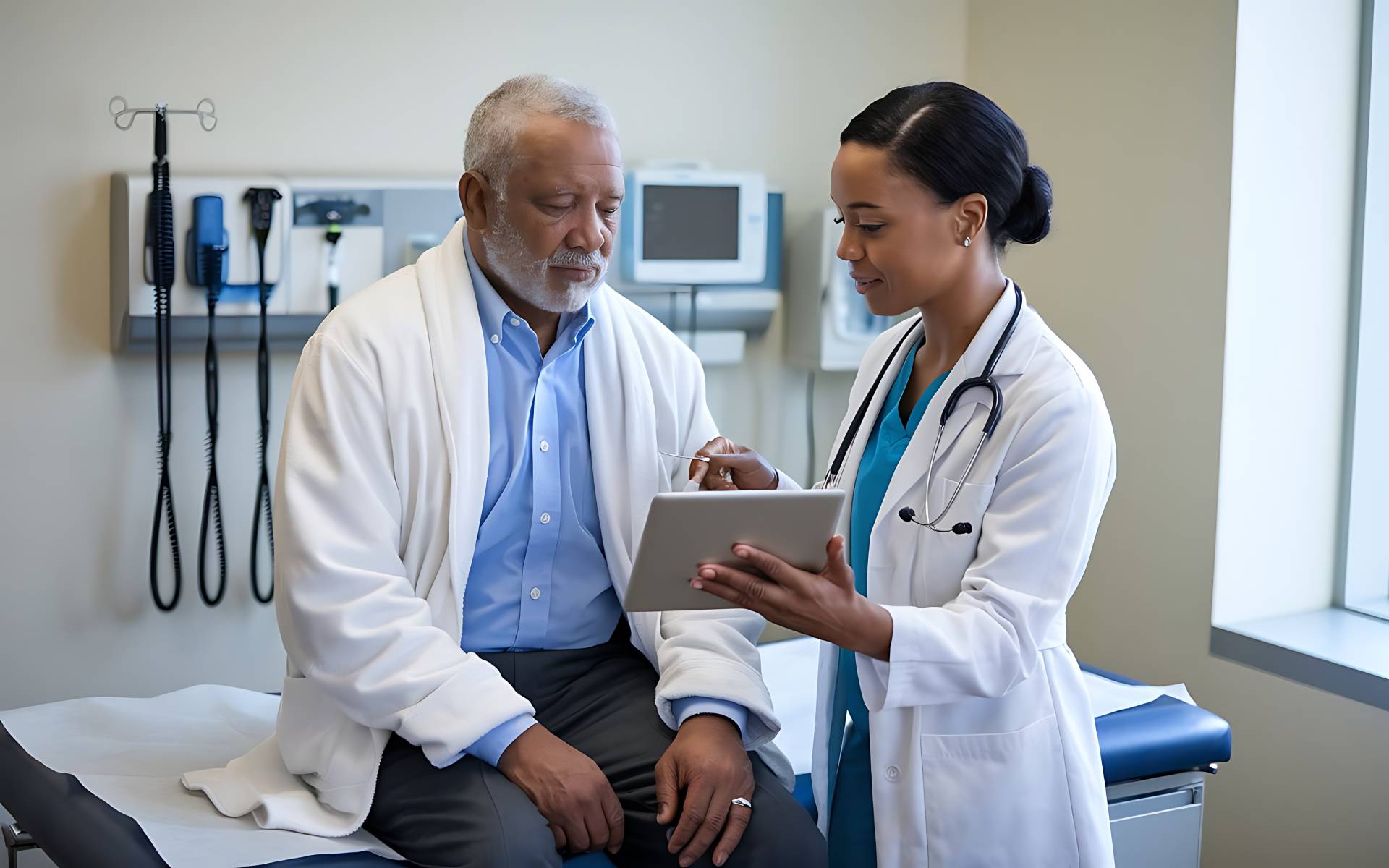Flexible Sigmoidoscopy in Connecticut
What is a flexible sigmoidoscopy?
A flexible sigmoidoscopy is an endoscopic exam during which a long, thin, bendable tube, or “scope,” is inserted into the rectum and advanced into the lower third of the colon. This technique is limited because the entirety of the colon will not be viewable. The pipe has a camera and a light on the end, enabling the GI provider to analyze the colon’s lining. A sigmoidoscopy may be performed to:
- Diagnose loose or watery stools
- Get to the root of the cause of gastrointestinal symptoms like:
- Abnormal x-ray outcomes
- Abdominal pain
- Bleeding
- As a screening tool for polyps and colon cancer.
Our experienced providers routinely conduct flexible sigmoidoscopies for Connecticut patients. If you are experiencing any concerning symptoms related to your GI tract like those listed above, consult with a Connecticut GI location nearest you to learn if a flexible sigmoidoscopy could benefit you.

What should I expect the day before my flexible sigmoidoscopy?
You will be given instructions from your GI provider for the necessary bowel prep for your procedure. Most individuals will be on clear liquids for the entirety of the day before the procedure. There are several individual types of laxatives to clean out the colon. It is imperative that you follow the instructions provided to you by your Connecticut GI specialist. Additional instructions may be provided for any medications you are currently taking. In most cases, medications can be taken as usual. However, sometimes in patients prescribed blood thinners (i.e., Plavix®, Coumadin®, warfarin, aspirin, anti-inflammatories) and in those with diabetes, individual instruction will be provided. Patients will be directed to take nothing orally any later than midnight, with an exception for some medications.
What should I expect on the day of my flexible sigmoidoscopy?
You’ll be instructed to arrive at the endoscopy center 1 to 1.5 hours ahead of your flexible sigmoidoscopy exam. This will allow for time to fill out all forms and get ready for the procedure. You’ll be directed to change into a medical gown. Usually, an intravenous (IV) catheter will not be started since sedation is not generally given with this test. You may be connected to machines that will allow the provider and staff to monitor your heart rate, blood pressure, pulse, electrocardiogram, breathing, and oxygen level during and after the procedure.
After you are inside the exam room, you will be asked to lie on your left side on the table. The GI provider will perform a rectal exam. The sigmoidoscope will then be slowly placed just inside the rectum. The scope will be carefully advanced through the sigmoid colon. A tiny bit of air is inserted through the tube into the colon to help the provider see. Any liquid remaining in the colon after the preparation can be rinsed and removed by the scope. Pending on the findings of the exam, a number of complications can be done at the time of the procedure, including biopsies, removal of polyps, and control of bleeding. After the procedure, all possible remaining fluid and air are suctioned out of the colon via the scope. Depending on the findings, the test usually takes 5 – 15 minutes to complete.
Since sedation is not typically needed, once the procedure is complete, the patient will be able to change back into their clothes and then be discharged from the endoscopy center. If sedation is not used, you will be released to perform your normal activities and drive. Most patients are free to drink and eat normally following their release from the endoscopy center; however, personalized instructions in regard to eating, medication, and activities will be given to you before discharge. Following the exam, the specialist and/or nurse will review the findings of the procedure with you. You will also go home with a written report. You will be notified of any biopsy results in 7 days or less.
What are the risks of a flexible sigmoidoscopy?
In most cases, sigmoidoscopy is an extremely safe procedure. Overall, complications are seen in less than 1% of patients. Typically, complications are not serious; however, should a complication occur, it might require hospitalization and surgery. Before the exam, a consent form will be discussed with the individual by the staff. In the case that any questions or concerns come up, these may be discussed with your provider before the beginning of the exam.
Bleeding can occur with biopsies and the removal of polyps. Again, significant bleeding, which might require hospitalization or a blood transfusion, is highly unusual. Still, bleeding has been known to happen during the exam or up to two weeks post-exam if a polyp is removed.
Puncture or perforation of the large intestine can occur. This may be found at the time of the procedure, or it may not become obvious until later in the day. In most cases, a perforation will necessitate surgery and hospitalization. This is an uncommon complication, even when polyps are extracted. It is very important that you reach out to your provider’s office right away if symptoms manifest after the procedure, like increasing abdominal pain, fever, or bleeding.
Just like any other test, a sigmoidoscopy is not always perfect. There is a small, accepted risk that abnormalities including, but not limited to, cancer and polyps, can be missed during the procedure. It is of the utmost importance to remain vigilant and to maintain check-ups with your providers as advised and make them aware of any new or persistent symptoms. Please speak with your Connecticut GI specialist if you have any questions or concerns.
Are there alternatives to a flexible sigmoidoscopy?
In most cases, any alternatives to the procedure will depend on the reason for needing the sigmoidoscopy to begin with. There are different x-rays that are able to look at the colon, including a virtual CT scan or a barium enema. However, it is important to note that these methods are only diagnostic exams. Removing any identified anomalies will require a sigmoidoscopy, colonoscopy, or surgery. To learn more about flexible sigmoidoscopy in Connecticut or to discuss any alternatives for diagnosing and treating your condition, please connect with our gastroenterology providers.

Advanced testing and diagnosis
Flexible Sigmoidoscopy FAQs
What should I do if I experience symptoms after a flexible sigmoidoscopy?
Following a flexible sigmoidoscopy, mild symptoms like bloating or gas are common. However, if you experience more severe symptoms such as persistent pain, heavy bleeding, or fever, it’s crucial to contact your healthcare provider right away. These symptoms could signify complications like perforation or severe irritation, which need immediate medical attention.
How accurate is flexible sigmoidoscopy in detecting colon problems?
Flexible sigmoidoscopy is a valuable diagnostic tool for identifying conditions in the lower part of the colon, like polyps, cancers, and inflammatory bowel disease. However, it only allows examination of the sigmoid colon and rectum, meaning issues in the upper part of the colon may go undetected. For a comprehensive evaluation of the entire colon, a colonoscopy is often recommended.
How often should I have a flexible sigmoidoscopy for colon cancer screening?
The recommended frequency of flexible sigmoidoscopy for colon cancer screening depends on individual risk factors, including age, family history of colon cancer, and personal health history. Typically, for individuals at average risk, it is suggested every 5 – 10 years, beginning at age 45. However, your doctor will tailor recommendations to fit your unique circumstances.
